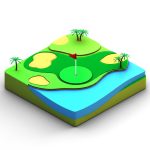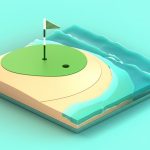Imagine a world where sleek, efficient wind turbines dot the urban landscape, silently generating clean energy. That vision is closer than ever, thanks to the Birmingham Blade, an innovative urban wind turbine powered by artificial intelligence. Claiming a remarkable seven-fold increase in efficiency compared to traditional designs, this technology promises to revolutionize how cities harness wind power.
This article explores the groundbreaking science behind the Birmingham Blade, examines its real-world potential, and discusses the challenges and opportunities that lie ahead for this game-changing renewable energy solution.
The Birmingham Blade: An AI-Driven Breakthrough
The Birmingham Blade represents a significant leap forward in urban wind energy technology. Developed through a collaboration between EvoPhase and Kwik Fab, this turbine is specifically designed to thrive in the challenging wind conditions of urban environments. Unlike conventional turbines optimized for high-speed winds in rural areas, the Birmingham Blade leverages the power of AI to maximize energy capture in the lower and more turbulent wind conditions found in cities.
What makes the Birmingham Blade so special? The answer lies in its innovative design process, which utilizes artificial intelligence to optimize every aspect of the turbine for peak performance.
Designing for Urban Winds: AI’s Unique Advantage
Traditional wind turbine design has long been constrained by human intuition and conventional engineering methods. The Birmingham Blade breaks free from these limitations by employing an AI-powered evolutionary design process.
Here’s how it works:
- Data Input: The AI system is fed vast amounts of data on wind patterns, building layouts, and environmental conditions specific to the target city (in this case, Birmingham, UK).
- Design Generation: The AI generates thousands of potential turbine designs, each with unique blade shapes, angles, and dimensions.
- Virtual Simulation: Each design is then rigorously tested through virtual simulations, mimicking real-world urban wind conditions.
- Evolutionary Optimization: The AI analyzes the performance of each design and iteratively refines the most promising ones, mimicking the process of natural selection.
This approach allows the AI to explore a vast design space far beyond the reach of human engineers, resulting in a turbine that is precisely tailored to the unique wind characteristics of its urban environment.
The Promise of 7x Efficiency: Separating Fact from Hype
EvoPhase and Kwik Fab claim that the Birmingham Blade is up to seven times more efficient than existing urban wind turbine designs. This figure is based on simulations and initial testing conducted in Birmingham, where average wind speeds are around 3.6 meters per second.
While these early results are certainly encouraging, it’s important to approach the 7x figure with a degree of healthy skepticism. Independent, third-party verification is crucial to validate these claims and assess the turbine’s performance under a wider range of conditions.
Several factors could influence the real-world efficiency of the Birmingham Blade:
- Location: Wind patterns vary significantly from city to city, and even from rooftop to rooftop. The turbine’s performance may differ depending on its specific location and the surrounding environment.
- Weather Conditions: Extreme weather events, such as storms and heatwaves, could impact the turbine’s performance and longevity.
- Maintenance: Regular maintenance and inspections are essential to ensure the turbine operates at peak efficiency over its lifespan.
Despite these uncertainties, the potential for a seven-fold increase in efficiency is undeniable. If validated by independent testing, the Birmingham Blade could represent a major breakthrough in urban wind energy and accelerate the transition to a cleaner, more sustainable future.
Overcoming the Obstacles: Challenges and Opportunities Ahead
The Birmingham Blade faces several challenges as it moves from prototype to commercial deployment:
- Cost: The initial cost of manufacturing and installing these advanced turbines could be a barrier to entry for some cities and businesses.
- Scalability: Scaling up production to meet global demand will require significant investment in manufacturing capacity and supply chain infrastructure.
- Regulation: Navigating building codes, safety regulations, and permitting processes can be complex and time-consuming.
- Public Acceptance: Gaining public acceptance for urban wind turbines will require addressing concerns about noise, aesthetics, and potential impacts on wildlife.
Despite these challenges, the opportunities for the Birmingham Blade are immense:
- Reduced Carbon Emissions: By harnessing wind energy, cities can significantly reduce their reliance on fossil fuels and lower their carbon footprint.
- Energy Independence: Urban wind turbines can help cities generate their own clean energy, reducing their dependence on centralized power plants and improving energy security.
- Job Creation: The development and deployment of the Birmingham Blade could create new jobs in manufacturing, installation, maintenance, and related industries.
- Technological Innovation: The success of the Birmingham Blade could inspire further innovation in renewable energy technologies.
A Collaborative Effort: Who Needs to Be Involved?
The successful deployment of the Birmingham Blade will require a collaborative effort involving a wide range of stakeholders:
- EvoPhase and Kwik Fab: These companies need to continue refining their technology, conducting rigorous testing, and building partnerships with cities and businesses.
- City Governments: City governments can play a crucial role by providing incentives for the adoption of urban wind turbines, streamlining permitting processes, and updating building codes to accommodate this new technology.
- Utility Companies: Utility companies can integrate urban wind turbines into their grids, purchase the electricity generated by these turbines, and invest in the development of smart grid technologies that can optimize the distribution of renewable energy.
- Investors: Investors can provide the capital needed to scale up production, deploy the turbines in cities around the world, and support further research and development.
- Researchers: Academic researchers can conduct independent testing, assess the long-term performance of the turbines, and explore new ways to improve their efficiency and reliability.
A Sustainable Urban Future Powered by AI
The Birmingham Blade represents a bold step toward a more sustainable urban future. By harnessing the power of AI, this innovative wind turbine promises to transform how cities generate clean energy, reduce carbon emissions, and create a more resilient and prosperous future for all.
How to Replicate Birmingham Blade AI Wind Turbine Design : A Developer’s Guide
The Birmingham Blade, with its AI-driven design and potential for a seven-fold efficiency increase, has captured the imagination of the renewable energy sector. This section serves as a developer’s guide, exploring the key elements required to replicate its success and the path to advancing urban wind energy.
Understanding the Core Principles: A Foundation for Innovation
Replicating the Birmingham Blade’s design begins with understanding its core principles:
- AI-Driven Design: The turbine’s unique blade shape and configuration are the result of an AI-powered evolutionary design process, optimized for urban wind conditions.
- Low Wind Speed Operation: The design is specifically tailored to capture energy from low-speed, turbulent winds, which are characteristic of urban environments.
- Compact and Lightweight: The turbine is designed to be compact and lightweight, making it suitable for rooftop installations and other urban locations.
The AI-Powered Design Process: A Step-by-Step Guide
Replicating the AI-powered design process requires a combination of expertise in AI, wind energy engineering, and computational modeling. Here’s a step-by-step guide:
- Data Acquisition: Gather comprehensive data on wind patterns, building layouts, and environmental conditions in the target city. This data will be used to train the AI algorithms and simulate the turbine’s performance.
- Algorithm Selection: Choose an appropriate AI algorithm for evolutionary design, such as genetic algorithms or particle swarm optimization.
- Design Space Definition: Define the design space for the turbine, including parameters such as blade shape, angle of attack, and rotor diameter.
- Simulation and Evaluation: Develop a high-fidelity simulation model to evaluate the performance of each design in realistic urban wind conditions.
- Iterative Optimization: Use the AI algorithm to iteratively optimize the design, based on the simulation results.
Advanced Manufacturing Techniques: From Design to Reality
The Birmingham Blade’s curved blade design requires precision manufacturing techniques to ensure optimal performance. Some of the advanced manufacturing techniques that could be used to replicate the design include:
- 3D Printing: Additive manufacturing techniques can be used to create complex blade shapes with high precision and minimal material waste.
- Composite Materials: Lightweight and durable composite materials, such as carbon fiber, can be used to reduce the weight of the blades and improve their aerodynamic performance.
- Robotic Automation: Robotic automation can be used to streamline the manufacturing process and ensure consistent quality.
Integrating into Urban Infrastructure: Overcoming the Challenges
Integrating urban wind turbines into existing city infrastructure presents several challenges:
- Building Codes and Regulations: Ensure compliance with local building codes and regulations, including safety standards for wind turbines.
- Grid Interconnection: Develop strategies for connecting the turbines to the electrical grid, including smart grid technologies that can optimize the distribution of renewable energy.
- Noise and Vibration Mitigation: Implement measures to mitigate noise and vibration from the turbines, such as soundproofing and vibration dampening technologies.
- Aesthetics: Design the turbines to be aesthetically pleasing and minimize their visual impact on the urban landscape.
Addressing the Remaining Questions: The Path Forward
Replicating the Birmingham Blade’s success requires addressing several remaining questions:
- Independent Verification: Conduct independent testing to verify the claimed 7x efficiency increase and assess the turbine’s performance under a wider range of conditions.
- Long-Term Durability: Evaluate the turbine’s long-term durability and maintenance requirements to ensure its economic viability.
- **Scalability
- Unforgettable: Talking Stick Golf Club Review – Desert Golfing Redefined - November 17, 2025
- Discover Talega Golf Club: Championship Golf & Spanish Hospitality Awaits! - November 15, 2025
- Is Strawberry Farms Golf Club Orange County’s Best Kept Secret? - November 13, 2025









